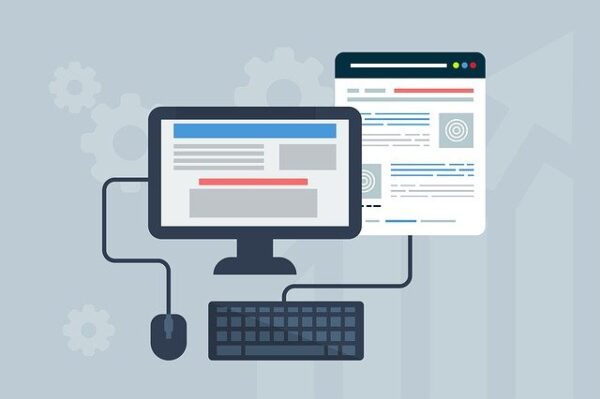Organizations will often fail to notice when unwanted users access their sensitive databases and networks. They realize the gravity of the situation only after the damage is done. Consequently, businesses need to implement a vigilant procedure to detect, limit, and prevent unauthorized access to sensitive elements of their IT infrastructure.
What is Unauthorized Access?
Simply put, unauthorized access occurs when an attacker accesses a firm’s network in an unwarranted manner. That includes accessing a database, device endpoint, or app environment
The same “unauthorized access” aspect applies to individual users as well. (For example, somebody else using your phone without your permission is unauthorized access. There can be seemingly infinite ways such intrusions may happen. The risk of unauthorized access includes various malicious consequences, from data breach and financial losses to service unavailability (DDoS attacks) or losing control of the entire network (ransomware attacks).
It is therefore essential to detect unauthorized access as quickly as possible so organizations can have sufficient time to remediate threats before severe damage occurs.
Security measures to prevent unauthorized access
As explained previously, unauthorized access could occur in numerous ways. The attacker simply needs to detect weak spots allowing access to sensitive locations. For example, attackers may exploit security vulnerabilities, unprotected endpoints, or reused passwords to gain access to a system.
Then, gaining access to one sensitive area allows unrestricted access to other locations. For instance, if an attacker finds a password to a sensitive system, it can expand the reach to the entire network by exploiting that user role. Likewise, uploading malicious documents or running malware also opens endless possibilities for an adversary to misuse their foothold access.
To prevent unauthorized access to a network, businesses must apply vigilant security practices. Some standard measures that significantly reduce unauthorized access attacks are described in the next section.
1. Strengthening physical security of devices
Technical security measures in an organization will not apply if an adversary gains physical access to sensitive systems. Users must avoid leaving computers, or other devices unlocked. Likewise, firms shouldn’t display login passwords openly in the offices or beside relevant systems. Also, one must avoid leaving sensitive documents unattended for an outsider to read – put everything under lock is key to prevent unauthorized access.
2. Set up strong passwords
As brute-forcing tools get smarter and password breaches become more common, it is imperative to set up unique and strong passwords. Reusing passwords or using known (or expected) words/phrases is always a bad idea. For example, “admin/admin” is the most used username and password combination for organizations. And that is extremely dangerous.
Ideally, passwords should be unique and long (at least 11 or more characters) and include a combination of numbers and special characters. The more complicated a password is, the longer it will take for an intruder to gain unauthorized access.
3. Apply multi-factor authentication
On top of strong passwords, the next big step to ensure accounts’ security is to harden the login sections by applying multi-factor authentication. Whether by OTPs, biometric scans, or an authenticator app, multi-factor authentication measures ensure authorized logins even in the event of a password breach.
4. Configure robust firewalls
Since organizations are continuously exposed to cyber threats, they need to configure robust firewall solutions (hardware or software firewalls) to prevent malicious intrusions. It includes deploying firewalls protecting networks, web apps, and other core components. Businesses can also hire professional Managed Service Providers (MSPs) like Indusface to configure appropriately secure firewalls according to their respective networks.
5. Limit user access to sensitive systems
Another key strategy to prevent unauthorized access to a system or device is to limit authorized access from the beginning. This practice becomes critical for sensitive databases and devices. Organizations must restrict user access to trusted employees only.
6. Applying Single Sign-On (SSO)
Single Sign-On (SSO) aids in better account management for both users and IT personnel. On the one hand, a user only needs to remember a single password to sign in. On the other, IT officials can easily manage that account by revoking active sessions quickly when required. For instance, if an adversary exploits a staff account, the security team can immediately halt access to other systems.
7. Apply IP Whitelisting
IP whitelisting with Web Application Firewalls (WAF) helps businesses facilitate legitimate user access and is particularly useful in a remote working environment. Though not viable for users with dynamic IPs or when using proxies/VPNs. Therefore, remote users must seek fixed IP addresses (whether from their ISPs, or VPN/proxy service providers).
8. Monitor login attempts
Businesses should be able to detect incorrect login attempts through monitoring. For example, if they detect suspicious or abnormal login attempts from an account, the company can deploy a respective remedial strategy, like revoking account access to prevent intrusion.
9. Run periodic vulnerability scans
As criminal hackers continuously hunt for unpatched vulnerabilities to exploit and gain access to a target network, it is imperative to run frequent vulnerability scans. They can also choose to hire third-party professionals to assist their IT staff with managing their IT security.
10. Keep all software up-to-date
The most neglected aspect that poses the biggest threat to business security is failing to patch systems promptly. The recent Red Cross cyberattack is a classic example of how unpatched vulnerabilities can lead to devastating consequences. Therefore, organizations must ensure they utilize a robust patching policy.

